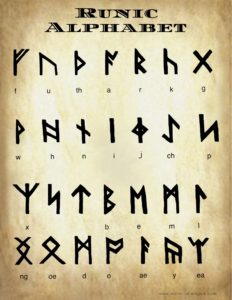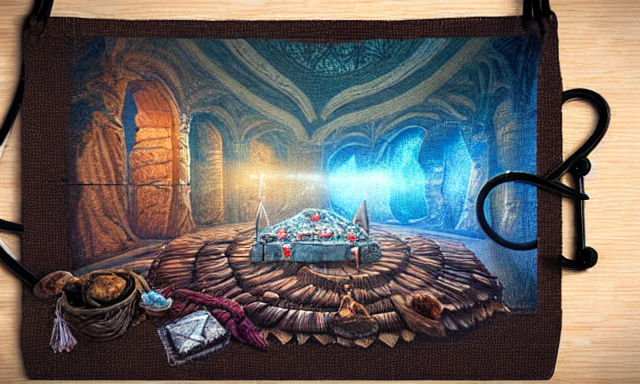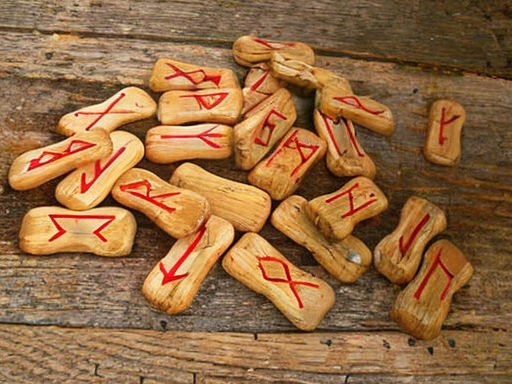Viking Alphabet Runes
During the time when Vikings first began to spread around, they were known to use various types of alphabets in their writings. Among these are Anglo-Saxon Futhorc, and Scandinavian Elder Futhark. But how do these types of runes work?
When you make a purchase through links on our site, we may earn an affiliate commission. As an Amazon Associate I earn from qualifying purchases..

Scandinavian Elder Futhark
During the Viking Age, the runic alphabet was used in Scandinavia. The runes were carved on wooden or metal objects and had a number of purposes. They were believed to have magic powers and were used to predict the future. They were also used in Old Norse literature. The runes were also used in Anglo-Saxon literature.
The runic alphabet was used in all Germanic cultures in the Iron Age and early Viking Age. It gradually evolved into different versions. The oldest of these was called Elder Futhark. It was used by Germanic tribes in Scandinavia and in parts of Europe where Germanic people lived. It was also used to write Proto-Germanic, Proto-Norse, and Proto-English. It was also used in jewelry and on weapons.
The runic alphabet developed in three slightly different versions. These versions developed in Norway, Denmark, and Sweden. The first version of the alphabet lost the letters g and w. It also lost the letter p. In the early period, the e rune mostly took the P-shape. In the 5th century, the e rune gained three strokes.
The second version of the alphabet is known as the Younger Futhark. It is shorter than the Elder Futhark and was used from the 9th century onwards. It is divided into long-branch runes and short-twig runes. The short-twig runes were used in Sweden and Norway, and the long-branch runes were used in Denmark.
The Elder Futhark Runic alphabet is composed of 24 runes. They are generally arranged in three groups of eight runes. They were used to write Proto-Norse, Proto-English, and Proto-High German. During the early Viking Age, runes were found on weapons, jewelry, and metal objects. The runes were used to connect with the higher self and to manifest a desired future. It is believed that these runes were also used for divination.
The runic alphabet gradually evolved into a Latin alphabet during the medieval period. It became the dominant form of writing in court documents and church documents. In the 12th century, most writing in Scandinavia was in Latin. The runic alphabet gradually disappeared in Scandinavia.
Younger Futhark
During the Viking Age, the Younger Futhark was the main alphabet used in Scandinavia. It was in use from 650 to 800 AD. It was also known as the “Ogham” of the Scandinavians. Its use declined after the Christianization of Scandinavia. It was replaced by the Latin alphabet in the early 1200s.
The Younger Futhark is made up of sixteen characters. It was a form of runic script that was created toward the end of the Viking Age. It was known as the “alphabet of the Norsemen”. It was originally developed as a writing system for trade contacts, diplomatic contracts, and private messages on wood or stone. It was used throughout Scandinavia and abroad during the Viking Age.
The Younger Futhark was used in several different areas of Scandinavia. The first inscription using the Younger Futhark was discovered in 720. The script eventually evolved to incorporate other sounds, which reduced the number of letters. The first two aett runes were replaced with a j and a k. The third aett was reduced to four runes.
Early examples of the Younger Futhark suggest that it was a ‘playful imitation’ of the Roman scripts. It appears to have been developed by a small group, likely comprising merchants and mercenaries from the Roman Army.
A rune is a small glyph that represents a sound or a word. They are often used in runestones, which are memorial stones. A rune’s sound or meaning is determined by the context in which it is used. The most well-known runes are the Medieval runes, which were in use for centuries.
The Younger Futhark is not as widespread as the Medieval runes. However, it is the oldest of the runic scripts. It has been used in inscriptions in Scandinavia and abroad during the Viking Age. There are also runes that are used by the Germanic peoples.
The Younger Futhark evolved from the Elder Futhark, which is the oldest form of runic script. It is believed to have been created by a single person or group in the first century AD. The alphabet consisted of sixteen characters that represented distinct sounds.
Anglo-Saxon Futhorc
Until the 7th century, Anglo-Saxons used an alphabet called futhorc to write. The Anglo-Saxon futhorc, or Old English futhorc, is a runic system that evolved from the Elder Futhark. The Elder Futhark, or Early Futhorc, was a 24-character runic script that was used to write Old English in the 5th century. It also spread to Frisia, a region of northern Europe, and was used by Frisians to record their Old Frisian language.
Anglo-Saxon futhorc was the runic alphabet used by Anglo-Saxons until the Latin alphabet was introduced in the 7th century. It was also used to write other Germanic languages in Britain, including Frisian, Old Frisian, and Old Saxon.
Anglo-Saxon futhorc had two variants. Early futhorc consisted of 26 runes, while medieval futhork included a total of 33.
Anglo-Saxon futhorc is believed to have been introduced to Britain from Frisia in the 5th century. It was used in England until the 11th century, when it was largely replaced by the Latin alphabet. The Anglo-Saxon futhorc was derived from the sound values of the first six runes in Old English.
Futhorc runes were used in Frisia and England until the 10th or 11th century. They were used for records and messages. They were also used in magic and spells.
The Anglo-Saxon futhorc went out of use with the advent of Christianity. During the Middle Ages, the Latin alphabet was extended with runic letters thorn and wynn. As the runes were replaced, they were used for different sounds.
The Anglo-Saxon futhorc has not received the same level of attention as the Elder Futhark. Although futhorc runes are still sometimes used in England, they are not commonly used.
The oldest surviving runic manuscript is the Old English rune-poem. It contains stanzas about each rune. It is the most detailed manuscript of Anglo-Saxon futhorc.
Other manuscripts include Ruthwell Cross, St. Cuthbert’s Coffin, and the Vercelli Book. Each of these manuscripts contains portions of the Dream of the Rood poem. The poem describes the runes’ names and their phonetic values. It is possible that the Anglo-Saxon futhorc and the Viking alphabet runes were similar. However, it is also possible that they were different.
Examples
During the Viking Age, runes were used in the language of the Norse people. They were written on stone or wood and carved. They were thought to be powerful and had magical properties. They were also believed to be a form of communication with the dead. These runes have been found in many different parts of the world. They have even been found in Greece, Russia, and Turkey.
Early rune inscriptions were found on walls, buildings, and cliffs. They also had a variable direction of writing. Occasionally, a character would be flipped depending on the direction of writing. It is possible that runes were cast to decipher the future, or they were used in divination. They were often used on charms and weapons. They were also used on jewelry.
In addition to being used for communication, runes were also used as symbols. They were used in sagas, and are often mentioned in pop culture. They are popular today and are often seen on the cover art of metal bands.
The first version of the Runic alphabet was created in the Roman era. It is believed that they were an imitation of the Latin letters that were used in most of Europe during the time of the Romans. During the Viking Age, runes used by the Norse were similar to the letters that we use today. The Elder Futhark is the oldest runic alphabet. It is believed to have been created by a single person. It was used in Scandinavia and parts of Europe where the Germanic people lived.
The Younger Futhark, which replaced the Elder Futhark, was created around 800 CE. It was used by the Vikings and was eventually discarded in the 10th century CE. It was composed of sixteen characters. It was divided into short twig and long twig runes. The first few letters were similar to the English letters th and d. The difference between the voiced and voiceless consonants is similar to that of the modern English “th” and “d”.
The Elder Futhark Runic alphabet was used in the Scandinavian area deep into the Viking Age. During the Middle Ages, runic alphabets were Latinised, and they eventually disappeared from the Scandinavian area.


















